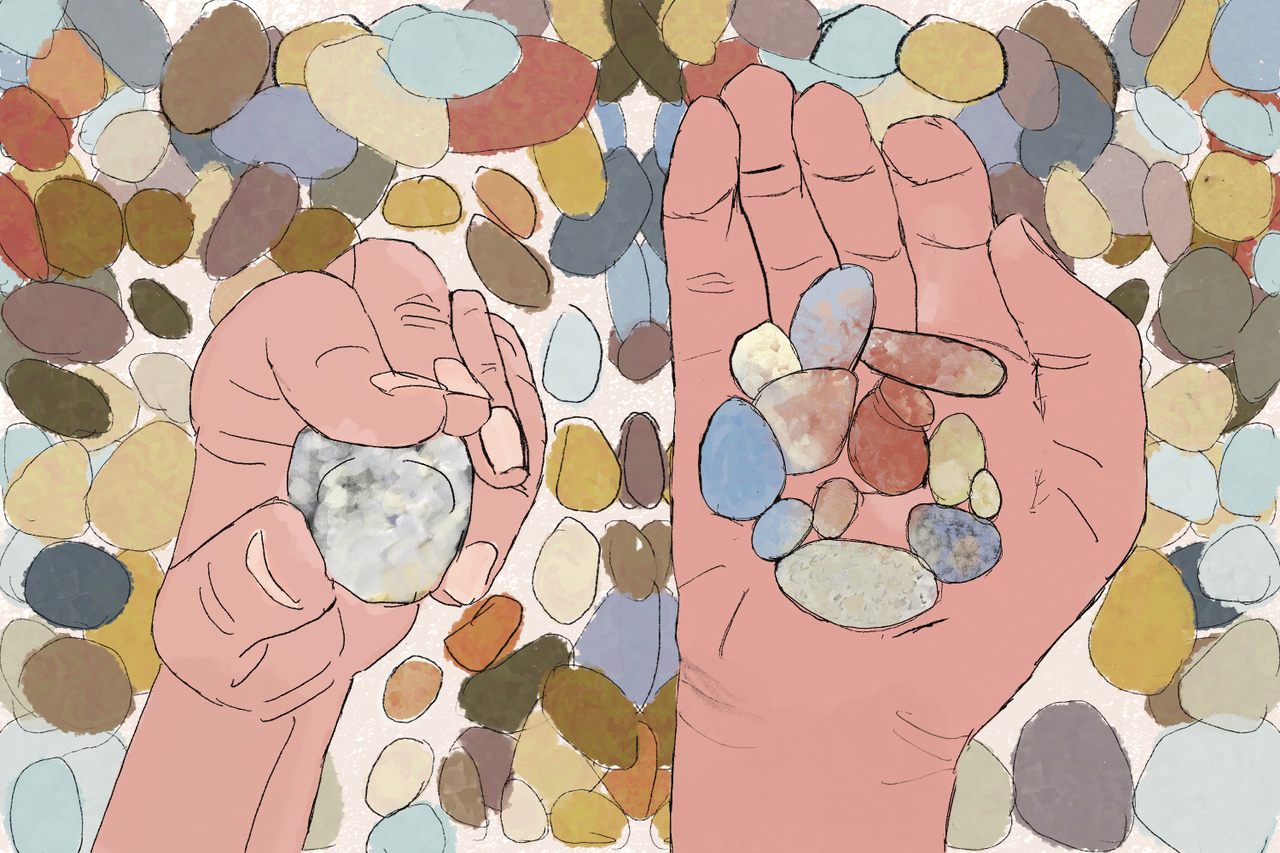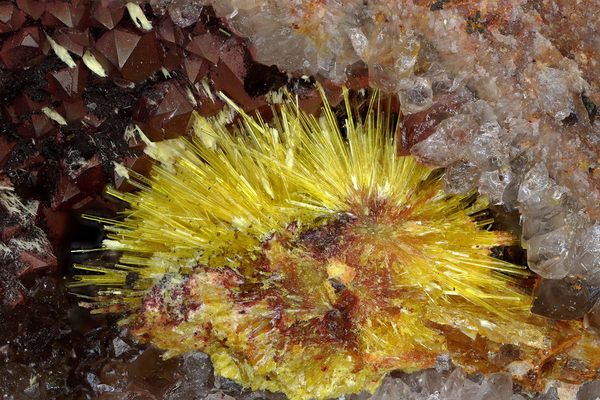How to Identify Rocks, the Ultimate Summer Camp Souvenir
Who hasn’t stopped to marvel over a cool rock along the lakeshore or on the trail? Here’s how to learn its backstory.
Most summer camp souvenirs wear out and fall apart over time, from that camp shirt that no longer fits you to a macaroni necklace slowly decaying in a box in the attic. But the cool rock you picked up along a trail as you hiked will be around forever. It’s one thing to have it on your shelf, reminding you of a past chapter in your life, but what about its past life? What stories could it tell? We asked Atlas Obscura Course instructor Yinan Wang, geologist and author of The 50 State Gems and Minerals: A Guidebook for Aspiring Geologists, to help us learn what rocks might have to say.
Rocks are everywhere. You find them on paths, by the side of the road, by the shores of a lake, in a stream, everywhere. This summer you may pick one up and wonder, “What’s its backstory?” Every rock has a tale to tell about itself and Earth’s deep history. Here’s a beginner’s guide to interpreting that story.
Is your rock a single mineral or a rock type?
A rock can be a single mineral or made up of many minerals, and can be one igneous, sedimentary or metamorphic. If your rock is a single mineral, it may be an obvious crystal or look more worn and rounded. For example, when a quartz crystal is weathered, it turns into a milky to clear rounded crystal. Rock types are usually composed of multiple minerals and don’t appear as a single crystal. If you see a lot of larger crystals, your rock is likely igneous, where large crystals formed in volcanic bodies slowly cooling underground. If you see a lot of small crystals then it is likely from a volcanic body, nearer the surface, that cooled faster. If the crystals in the rock seem deformed, or they’re small and red (garnets), then your rock is likely metamorphic, which means it formed but then was melted again at some point in the deep past.

Is your rock light or heavy?
Most rocks you may pick up will feel neither light nor heavy for their size, because the typical rock you’ll come across is mostly quartz and your brain has learned to categorize its density as “average.”
However, if your rock feels heavy for its size, then it contains denser elements such as iron, lead, manganese, and others further down on the periodic table. This tells you your rock is likely from some place deeper inside the planet, where denser elements are found, and made its way up to Earth’s surface through plate tectonics or other massive geologic processes. If your rock is heavy and also feels like metal, it could be a pure chunk of a metallic mineral such as pyrite, silver, or even gold.
A rock that feels light will be made from less dense elements such as carbon, sodium, beryllium, calcium, and others. This suggests your rock was formed closer to the surface or even on the surface. Rocks that feel light because they are full of holes may be volcanic—the holes can indicate where gasses were trapped.
What color is your rock?
Color can tell you a lot about the history of your rock. Darker colors usually indicate the presence of denser elements such as lead and manganese—but if your rock is less dense yet dark in color, it could be due to carbon, and may be a sedimentary rock such as coal.
Lighter colors usually indicate elements such as calcium, silica, and others. It’s uncommon for a dense rock to have a light color. Blue and green usually indicate the presence of oxidized copper, while rusty reds usually mean iron. Color can serve as a warning: Bright yellow may indicate poisonous elements such as arsenic, while pastel shades of pink, yellow, and green can be a sign that radioactive elements are present.
Is your rock flat or round?
Rocks that were formed by layers of sediment slowly deposited over time tend to be flat. These sedimentary rocks will often break into flatter pieces if you drop them. If your rock makes for a very good skipping stone, chances are it’s sedimentary.
Roundish rocks tend to be rock types rather than single minerals, and are generally either igneous or metamorphic. This is because the individual minerals are bonded together well, allowing the rock to resist weathering.

Do you see any fossils?
Occasionally you’ll pick up a rock and see what looks like the impressions of shells, leaves, or other weird bits. Most likely you have found a fossil—the majority of which are in sedimentary rocks. Shells and crinoid stems, which are cylinder shapes that are parts of sea lilies and similar organisms, tell you that the rock you’re holding was formed under an ancient sea. Leaves and other plant bits indicate your fossil was part of a swampy or muddy area, or possibly near a lake shore. Occasionally you’ll find a rock that has a porous look to it; it might be a bone, most likely a fossil mammal bone or, rarely, a dinosaur. But before you pocket that fossil, make sure you know the local law. On most—but not all—federal land, for example, it’s ok to collect common invertebrate fossils for personal use. However, it’s illegal to take vertebrate fossils—and that includes footprints, coprolites, or other fossilized material the animals left behind. State laws vary widely, and collection on private land is subject to the landowner’s permission.
Ready to rock? Check out my book, and consider downloading the app Rock’D, which can provide information about the geologic layers at your location, and what they might contain.


























Follow us on Twitter to get the latest on the world's hidden wonders.
Like us on Facebook to get the latest on the world's hidden wonders.
Follow us on Twitter Like us on Facebook